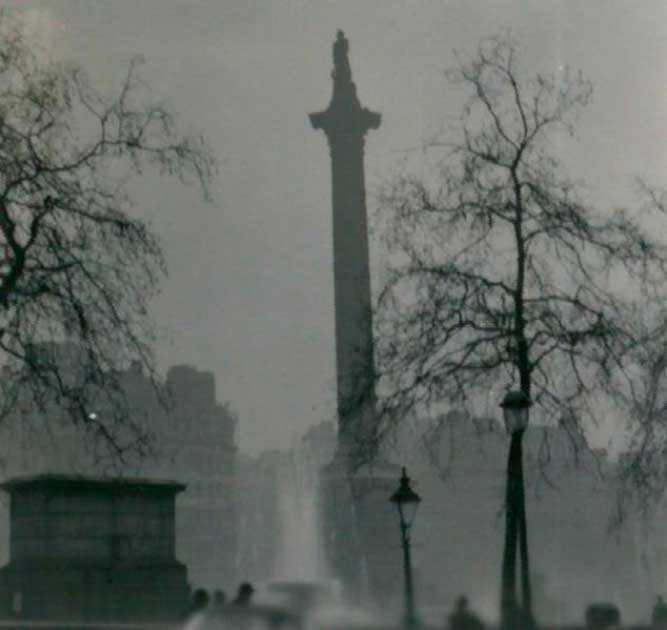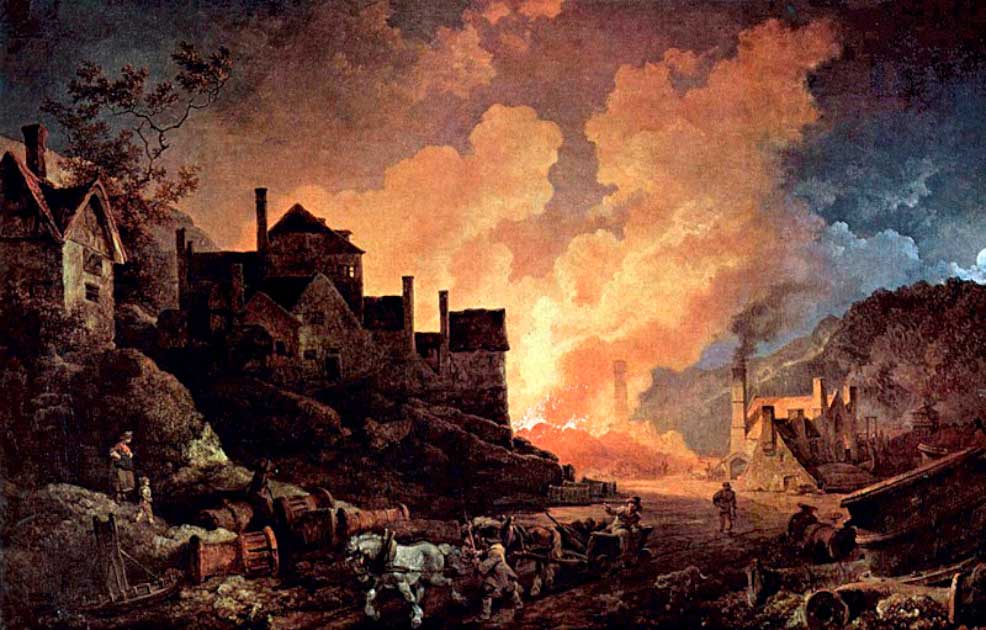Global warming is very likely the single most important challenge facing humanity. Without swift and radical action to reduce the damage done to the environment, our ecosystem will collapse and our world will become uninhabitable.
The roots of this change lie in the Industrial Revolution, both in the shift to large-scale burning of fossil fuels and the population boom driven by industrial agriculture and industry. There have been warning signs throughout this time about the damage, from soot-stained factory bricks to “black lung” amongst the miners, but these problems were largely dismissed: after all, there was a lot of money to be made.
However this slowly changed as the danger we were creating in our environment became noticed. A key moment for this realization came on December 5, 1952, with the Great Smog of London.
For four days from December 5 to December 9, a thick and toxic fog settled over London. Caused by a coincidence of weather features which trapped the industrial pollution put out by London close the ground rather than allowing it to disperse, it led to more than 12,000 deaths in total.
Even the official figures at the time admitted that more than 4,000 people died. However, modern estimates suggest that as many as three times that number died in four days in London.
The Onset Of The Great Smog
On the night of December 5, 1952, a fog conjured itself on the darkening streets of London and thickened to such an extent that pedestrians and cyclists could not see beyond a few feet or meters distance. In some areas, the Smog was so dense in thickness that people could not even see their own feet.
The night was without wind, and the belt of high pressure across London acted in the still air to keep the smoke from London’s chimneys and factories close to the ground, concentrating it as it formed a deadly bubble over the city.

As the smog thickened there were a string of road accidents and even more deaths. But it was the sulfurous air itself which was the main danger, choking thousands of Londoners as it became toxic and deadly.
- London’s Notorious Female Gangsters: The 40 Elephants
- Centralia Mine Fire: Devastation from Underground
The city of London had experienced much Smog before the Great London Smog. But the Great London Smog was by far the thickest. People could not see their feet or the people beside them. The people could not see the sun, and there was no light.
The historical accounts even say that it was like evening, even during the day. The Smog was so toxic that it stung the eyes of people and also made them gasp for breath. The gases that were the cause of the Great London Smog affected the people who went out on the streets. Even people who were inside their houses got affected as the windows opened and air came in.
A Million Coal Fires Burning
The situation was made particularly bad because of the time of year. On the cold day of December 5, Londoners would all be burning coal fires for warmth. The smoke from all these houses was gathered together by the atmosphere and collected over the basin of London.
This sulfurous, toxic smoke shroud that suffocated and killed thousands of people in London. The weather conditions finally resolved with time, but by the time the veil of Smog had lifted, there were many deaths in and around the city.
Burning coal can release toxic gases like carbon monoxide and carbon dioxide. At that time, there were not many forms of cleaner, alternative fuels. Therefore, people suffer from the intake of toxic gases from the burning of coal.
Apart from domestic and public settings, even industries and the new power plants also depended on coal burning for processes. The huge rate of coal usage led to recurrent smog and ultimately led to the Great London Smog.
The biggest aspect of the Smog was the weather, however which acted to trap the toxic gases close to the city. This forced the people to continuously breathe and come in close contact with these gases. All of these reasons led to the massive scale of death during the Great London Smog.
Light winds did not blow the fog away, and high humidity ensured it was weighed down in the atmosphere, unable to rise far enough above the houses to allow clean air underneath. The situation was deadly, and those in power resolved that such an event would never happen again.
Lessons Learned
There were many negative effects on people’s health and public life during those 4 to 5 days. People suffered from visibility problems, even temporary blindness and breathing problems. Many people, women and children died from asphyxiation.
- London’s Lost Peak: What on Earth was Whitechapel Mount?
- The Secret of Lake Nyos: How Did 1,800 People Die Overnight?
When looking at the bigger picture of public life, the Great London Smog led to the virtual shutdown of London city. Public transport, which was an instrumental part of London city, was shut down.
Ambulances and medical services also shut down and were delayed, which eventually increased the number of deaths and health problems for people. The underground rail system was barely operational, but it was very congested and led to further problems for people.
Public events and entertainment events were cancelled as the Smog brought the great city to a virtual standstill.

The poor visibility of the London roads and the deteriorating health of people also led to more crimes as criminals took advantage of the scenario. The Great London Smog wreaked havoc within those few days and had a long-lasting impact on the laws and lifestyle of Londoners.
Before the havoc of the Great London Smog, smogs were seen as an almost charming part of London life, called “Pea Soupers” after the popular thick soup and normalized as a part of life in the city.
People had accepted the smogs as part of the city atmosphere. However, the Great London Smog was a wake-up call for London authorities to clean up the city and control the pollution levels.
Before the Great London Smog, the people of London saw the smogs as a sign of industrial progress and mechanical comfort in their homes and public life. People would celebrate the black air and smoke of London as a sign of the success of industrialization. People of London and nearby cities had tolerated pollution as a trade-off for artificial comforts that the industrial era had introduced.
However, the Great London Smog pushed them to recognize the underlying problems that accumulated due to unchecked pollution. The authorities of London city then took conscious measures to clean up the city’s air and avoid the onset of such smogs in future.
The authorities introduced laws and practices that controlled the quality of air to be breathable and visible quality. Today, although we have witnessed Smog in different areas of the world, there have been no repetitions of the Great London Smog of 1952.
Top Image: The smog descends: a typically “Pea Souper” blankets Big Ben and the Houses of Parliament, a few years before the London Smog disaster of 1952. Source: Willem van de Poll / Public Domain.
By Bipin Dimri